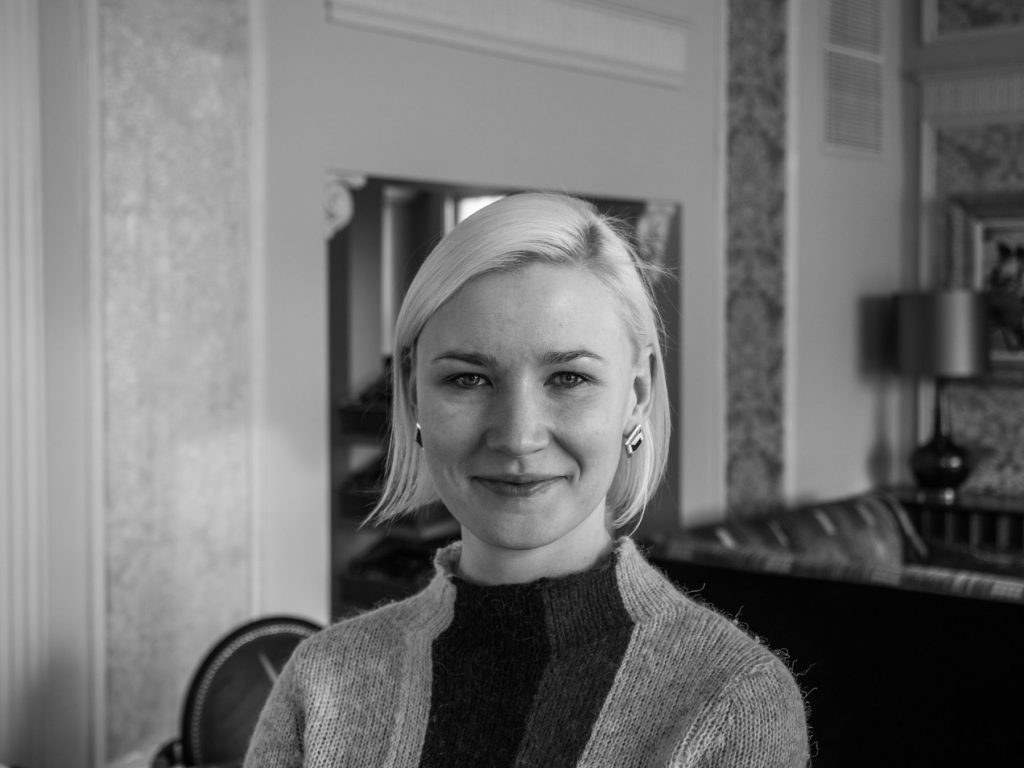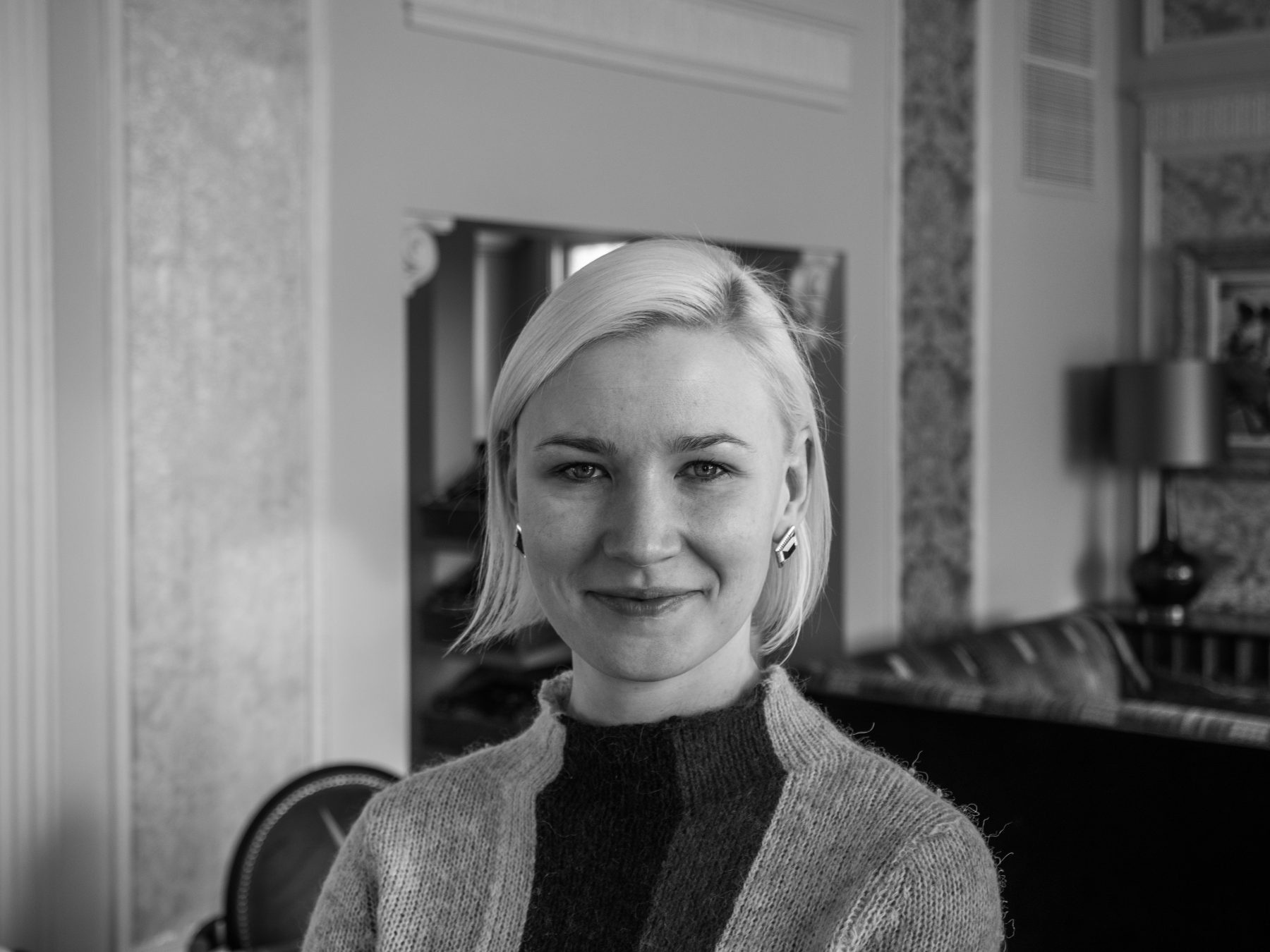An interview with Neringa Stoškutė from Kaunas Biennial (Lithuania)
Neringa Stoškutė, an independent curator and project manager at Kaunas Biennial, claims that art, and various educational programmes accompanying it, may contribute to the development of critical thinking, analysing current local and global issues, as well as to inspire people to ask complex questions. In this interview, the curator shares her experience about the educational side of the artistic projects and her thoughts on how art can help shape the discursive environment.
You have been working on audience development for Kaunas Biennial, coordinating its educational programme for quite some time now. A special educational programme will constitute a significant part of Magic Carpets platform as well. Could you tell us a little more? Who will be its target audience?
I joined Kaunas Biennial as a volunteer in 2013. I helped with the installation and dismantling of exhibitions, assisted during the Grand Opening of the Biennial and worked closely with the emerging artists delivering weekend workshops for the biennial visitors. I also one of the emerging artists, Aistė Jančiūtė, during her 21-day-long performance. It was a very rewarding and enriching experience. In 2015 and 2017, I became the audience development manager for Kaunas Biennial, responsible for organising and delivering an innovative educational programme. One of my main tasks as an audience development manager was to create a discursive environment and ensure maximum access to culture for various age and interest groups in Kaunas. Moreover, I worked to expand and attract a more diverse audience to visit Kaunas Biennial exhibitions and events.
Magic Carpets platform is a residency-based programme for emerging artists, who will travel to different countries around Europe and work closely with local artists and local communities in creative collaboration and co-creation projects. The aim of the platform is to increase the visibility of the emerging talents and nurture the sense of community through creative activities. The educational side of the platform will deal with implementation of various activities that will help the artists develop the new and deepen the existing contacts with various audiences and target groups through inclusive cultural programme and extensive use of innovative approaches. Magic Carpets is a transdisciplinary project, involving creatives from various art fields (visual and performing arts, theatre, music, public art, community art, etc.). Therefore, our target audience is very varied, starting with local and foreign emerging talents (artists, curators, designers, etc.) and local communities, who will be directly involved in the platform and the broader public, reached by the dissemination of information. The results of the residency will be presented in public spaces, which, we hope, will have a more profound impact and provide direct access to the contemporary art for local audiences.
Why do you think educational activities, accompanying all sorts of art and cultural events, are becoming more and more indispensable these days?
Before joining Kaunas Biennial, I lived abroad for 14 years, where I completed Master studies of Curating Contemporary Design. During my curatorial studies and practice, I became aware of the importance of educational programmes delivered by museums and galleries. The various educational activities offered by museums, galleries and other cultural institutions provide the key to understanding not only the objects of art and their stories (who made them, how they were made, how much people paid for them, etc.), but each person’s relationship with it, how much each of us is willing to engage ourselves with art, its objects and processes. Next to a very straightforward aim to convey knowledge about the works of art and contemporary art processes, educational activities also allow us to develop critical thinking and ask more complex questions (that depend on the exhibition content) about our relationship with the environment, current local and global issues (in the case of Kaunas Biennial, it has included an exhibition about the politics of memory, discussions about the use of public spaces, etc.). From my point of view, educational activities must develop our understanding as well as challenge our perception of art. They must be engaging, inspire us to wonder and question as well as provide opportunities to foster our creativity.
The 11th Kaunas Biennial that took place in 2017 and covered many public spaces all around the city, was a great example of how foreign artists can work within the local context and examine local history from their point of view. How would you describe the impact of the last Biennial on the city’s self-examination process?
For the 11th edition of Kaunas Biennial, we invited the curator Paulina Pukytė, who came up with the main idea for the event – to oppose the populist practice of removing and erecting traditionalist monuments in public spaces and suggest new, conceptual, and contemporary ways of commemorating and remembering certain people and events. By inviting several well-known international and local artists, the Biennial developed its main goal to look back at the monument-making history and suggest a new strategy for marking the places of memory and building monuments. New artistic projects were implemented in public spaces around Kaunas city, covering the area from Vilijampolė to the main train station.
In my opinion, Kaunas Biennial has helped the city to become a discovery ground for artists and visitors. The artists did a great job digging up the history of the city and pinpointing the most painful, intriguing and joyful events. This allowed the visitors of Kaunas Biennial and the citizens of Kaunas to discover both new and forgotten places, people and memories. The Biennial played a big part in highlighting the Jewish memory of Kaunas – at least one third of all Biennial projects were connected to this particular theme. It also allowed us to look back and remember very important and globally renowned personalities like Emma Goldman, Jan Zwartendijk, Adam Mickiewicz and George Mačiūnas, who, at certain points in their life, lived and worked in Kaunas. And, most importantly, in my opinion, Kaunas Biennial provided a platform for debate about our past, dealing with the Soviet regime that lasted for 50 years and eventually ended up with us recovering our independence and freedom. Since the event took place before commemorations of the Centenary of the Restoration of Lithuanian State in 2018, not only has it served as an opportunity for the city to rediscover itself, but it also helped us reconsider our relation to the city and its history as well.
Why do you think co-creation, artistic interventions into public spaces and public engagement are becoming crucial elements in contemporary art scene?
The Biennial team has always worked towards making Kaunas Biennial one of the most significant events for contemporary art in Kaunas, Lithuania and Europe. This means analytically reflecting the changing landscape and art practices in the current field of contemporary art all over the world. One of the main priorities of Kaunas Biennial has always been the promotion of creative collaboration and openness in the processes of art creation and its perception. In short, creative collaboration, co-creation and public engagement, through Kaunas Biennial educational programme, have always been the keystones of our practice. With every edition of the event, we aim to make Kaunas Biennial a platform for artistic debates, creative collaboration between artists and creative organisations/ art institutions and between artists and the public, interdisciplinary practices, international and intercultural partnerships, realization of innovative ideas and, finally, enhancing a sense of (artistic) community and ensuring maximum access to culture through various creative and participatory experiences or activities.
In addition, nowadays, the contemporary art transcends museum and gallery walls, while the use of public spaces for art presentation is increasing. This allows cultural organisations and artists to reach wider audiences, and, perhaps, people who would not normally go to art institutions. Artistic interventions into public spaces allow both the citizens and the tourists to discover new spaces in the city, (in)directly assisting the creation of a community and a discursive environment for the appreciation of the various forms of contemporary art.
Magic Carpets platform is included in “Kaunas – European Capital of Culture 2022” programme, which is mainly focused on community projects. Do you believe that people can be united through arts and culture? If so, in what ways? Could you give us some examples of successful cases of culture-inspired community building in Kaunas?
Magic Carpets platform and “Kaunas – European Capital of Culture 2022” have some overlapping aims. Fluxus Labs, one of “Kaunas 2022” programmes, specifically focuses on building communities through engagement in arts and culture. In Kaunas Biennial, we have expressed our wish to collaborate with Kaunas 2022 team and through joint projects between Magic Carpets platform and Fluxus Labs, to help empower the communities to celebrate their culture and history through collaboration and co-creation processes. We want to use the artist residencies of Magic Carpets to connect foreign and local artists with local communities in order for them to unleash their creative potential and create new public artistic interventions.
There is great deal of good practice examples of projects that have successfully created communities through cultural processes in Kaunas; there is the Yard Gallery, Šančiai and Šilainiai projects. All of these initiatives draw attention to the misused, unused or forgotten spaces, places and, in some cases, even communities within the city. Secondly, they help and empower local people through creative engagement and co-creation exercises to take responsibility for their environment by establishing an emotional connection to certain place or people. Third and the most important thing, they bring communities together for one common goal, which helps to establish stronger connection between citizens and neighbours that might not have considered that they have something in common, such as an identity or the history of the place they live in before. The Yard Gallery, Šančiai and Šilainiai projects explore the themes of local memory, history and identity through personal stories in order to create new public spaces and alternative cultural and social hubs. Through the Magic Carpets platform, we aim to build the same sense of an engaged artistic community on a European level, while simultaneously highlighting some of the local and personal stories of the places we visit along during our magical carpet ride…

